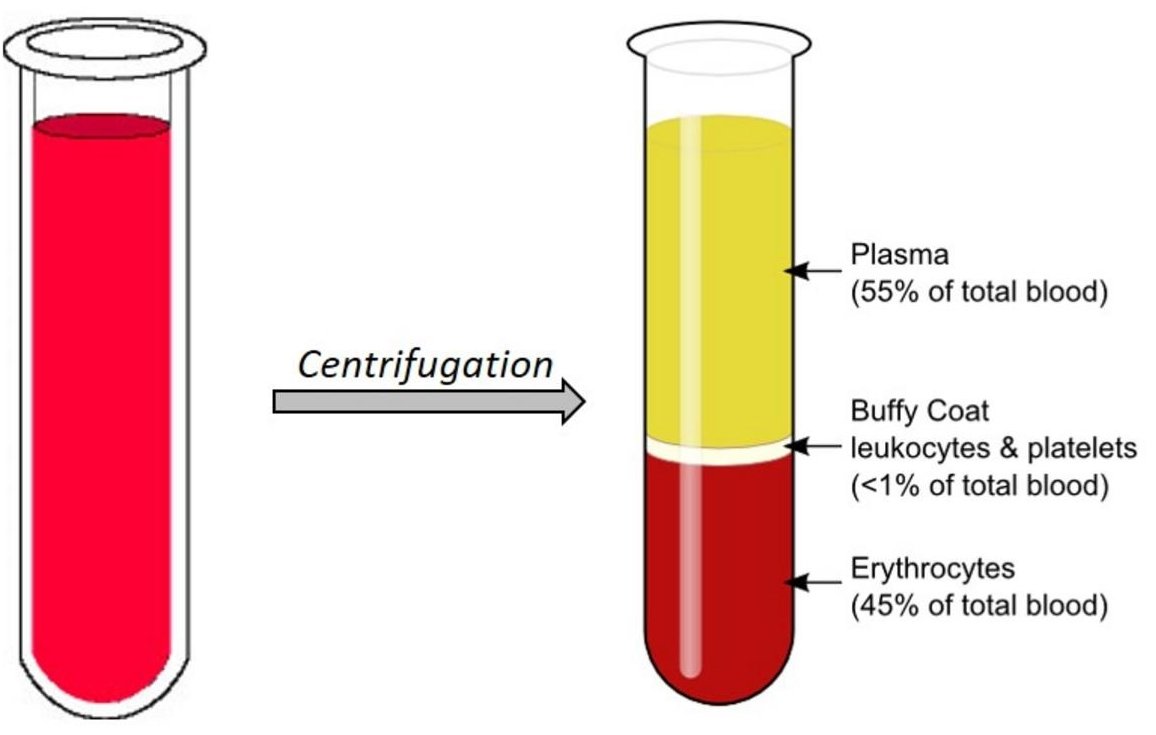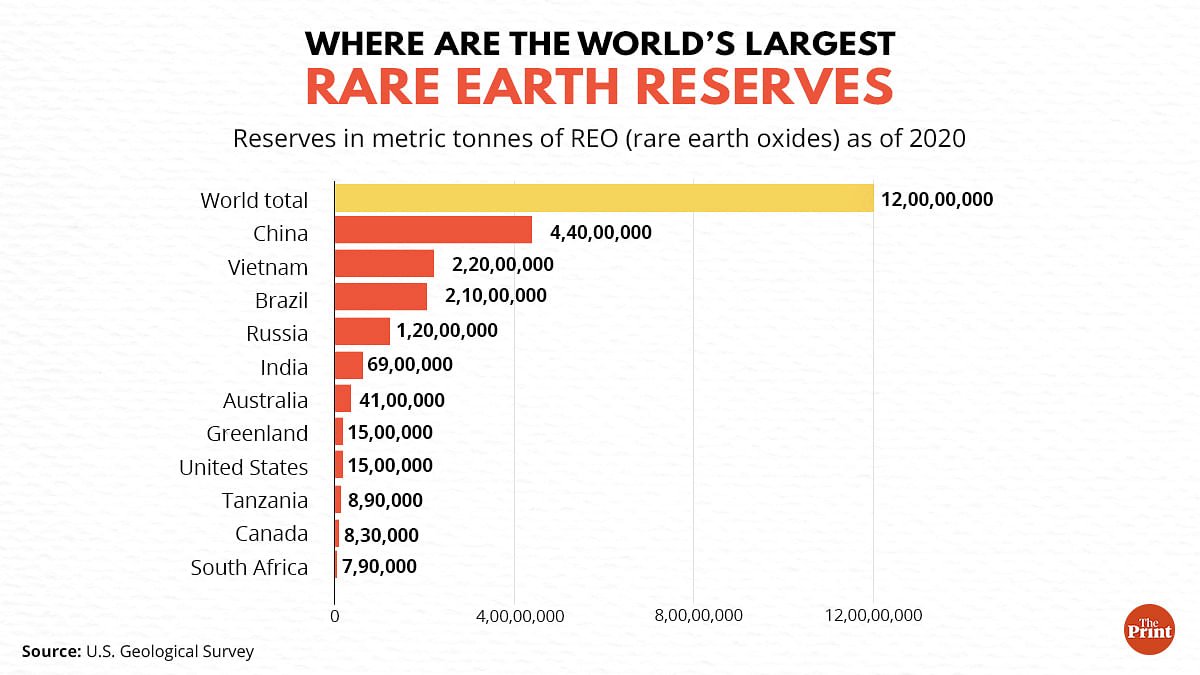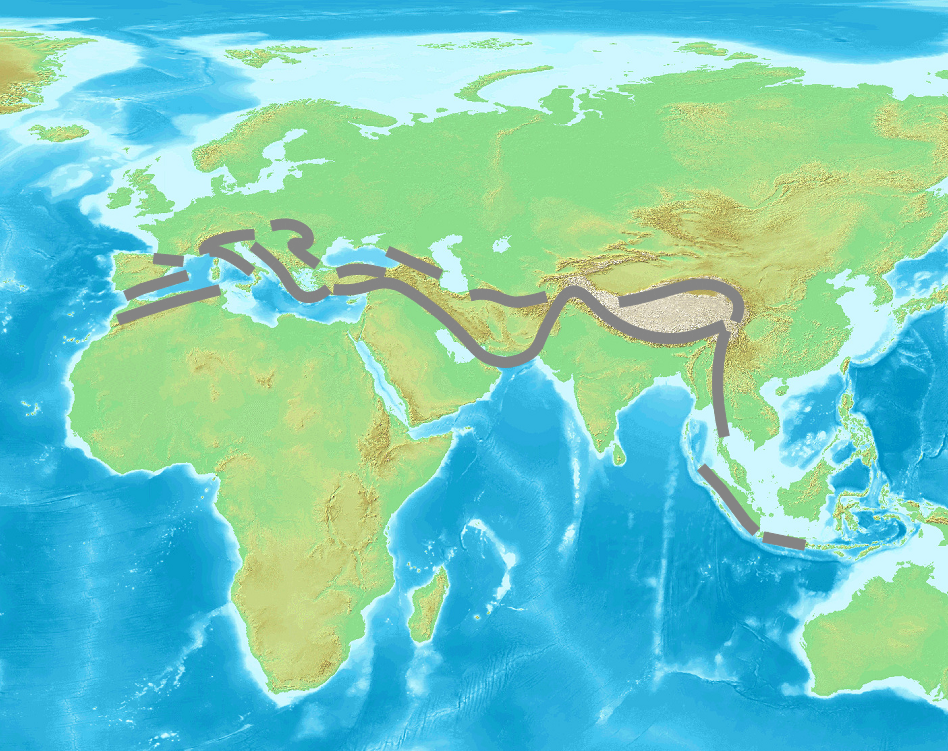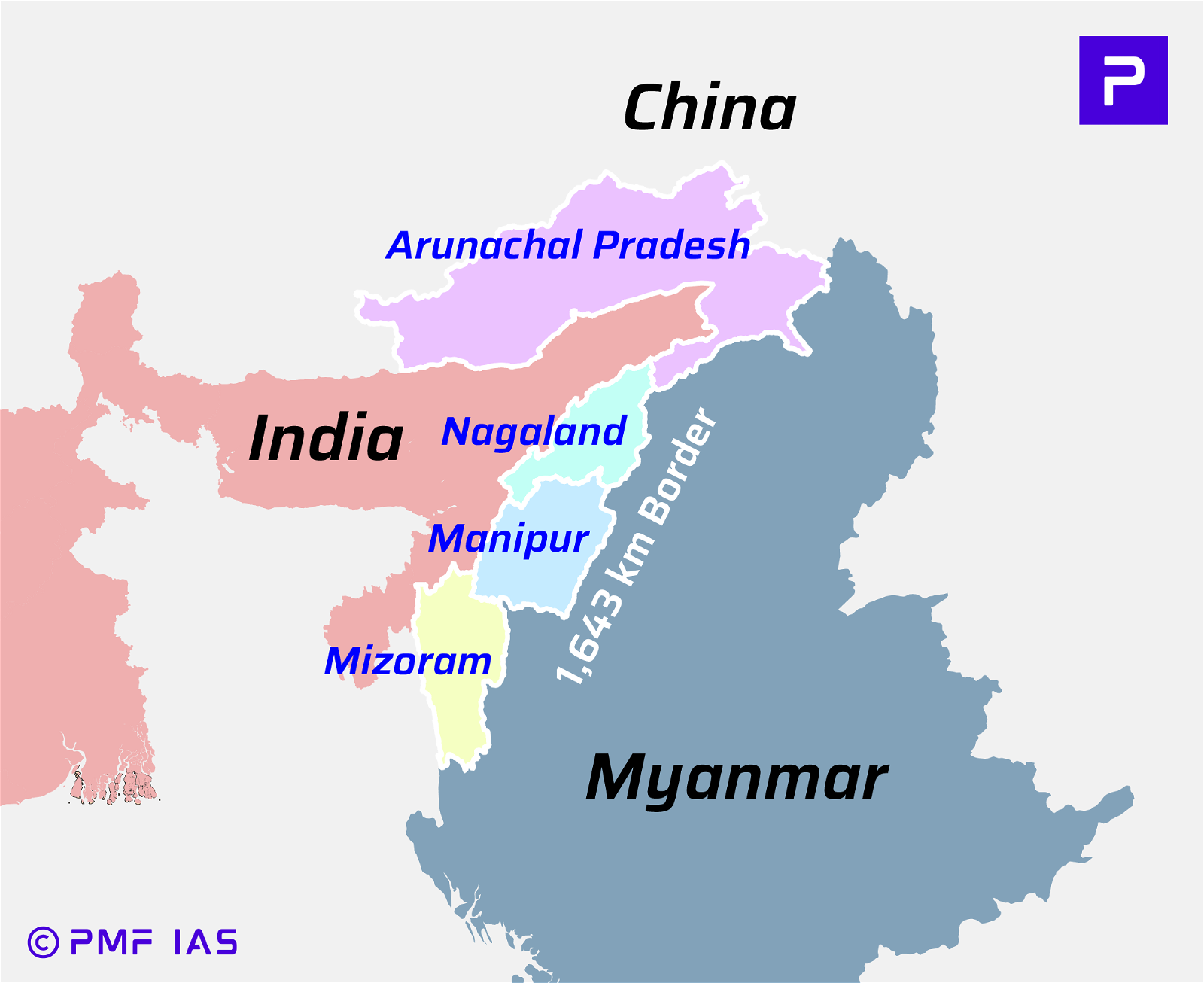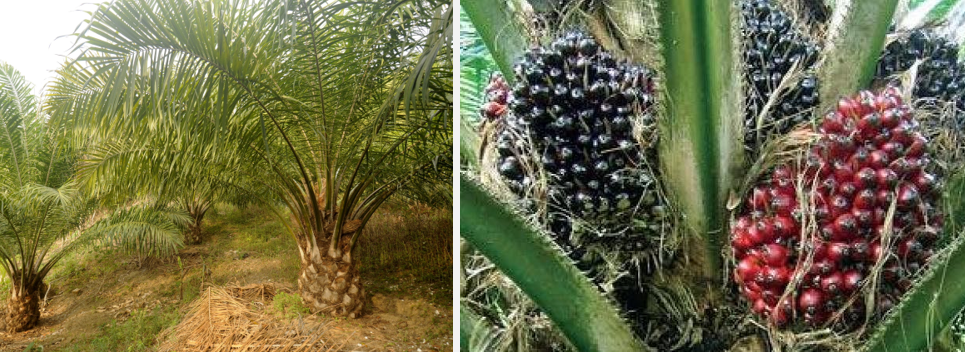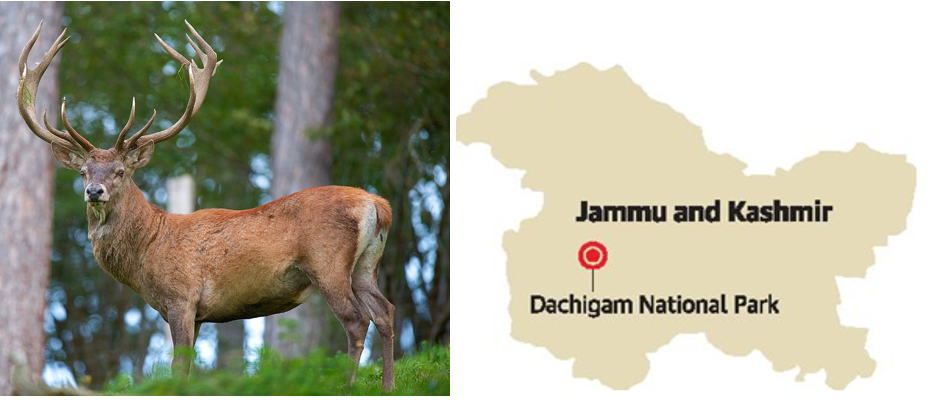
Current Affairs October 03, 2023: Nobel Prize in Medicine 2023, Intermittency in Renewable Energy, Bombay Blood Group
Subscribers of "Current Affairs" course can Download Daily Current Affairs in PDF/DOC
Subscribe to Never Miss an Important Update! Assured Discounts on New Products!
Must Join PMF IAS Telegram Channel & PMF IAS History Telegram Channel
{GS1 – A&C – Laws} AMASR Act, NMA and ASI
- Context (IE I TP): The 359th report on the functioning of the Archaeological Survey of India was prepared by the department-related Parliamentary Standing Committee on Transport, Tourism & Culture.
- The committee observed that many of the 3,691 Centrally Protected Monuments (CPMs) are “minor” monuments with no national significance.
- The report calls for prioritising monuments with national significance, as minor structures (75 colonial-era graves of limited heritage value) receive the same protection as iconic sites like the Taj Mahal.
Ancient Monuments and Archaeological Sites and Remains Rules 1959 (AMASR Act)
- The AMASR Act prohibits construction within a 100-meter radius of protected monuments.
- An additional 200-meter radius beyond the prohibited area is considered regulated, where construction is allowed but only with the approval of the National Monuments Authority (NMA).
Restrictions around monuments leading to public inconvenience
- In some cases, the entire village falls within a 300-meter radius of a monument, making house repairs difficult for residents.
- There have also been instances where this rule came in the way of infrastructural projects and real-estate development, as it applies equally to significant and insignificant monuments.
Removal of Monument from Centrally Protected Monuments (CPM) list
- The List of Protected Monuments is governed by the AMASR Act, which safeguards structures and locations aged over 100 years, including temples, burial grounds, milestone markers, etc.
- To remove specific monuments from the CPM list, an amendment to the AMASR Act is required.
AMASR (Amendment) Bill
- The government plans to bring the AMASR (Amendment) Bill with “an aim to redefine monuments and rationalise the use of the area around the protected monuments”.
- The rules will be relaxed for smaller monuments like statues, cannons, etc., but will be retained for UNESCO World Heritage Sites nationwide.
Bifurcation of Archaeological Survey of India (ASI)
- The committee highlighted that 14% of CPMs had faced encroachments, with only nine encroachments successfully removed since 2015 by ASI.
- It recommended bifurcating the ASI’s responsibilities based on cerebral and managerial functions.
- The ASI would focus on core duties like exploration, excavation, and conservation.
- While the India Heritage Development Corporation (IHDC) would manage revenue-related aspects, such as ticket collection and auctions.
- This bifurcation aims to enhance the management & efficiency of preserving India’s cultural heritage.
National Monuments Authority (NMA)
- The National Monuments Authority (NMA) is a statutory body (Ministry of Culture) that has been set up as per the AMASR (Amendment and Validation) Act, 2010.
- Several functions have been assigned to the NMA, i.e., management of the prohibited and regulated areas around the CPMs and Monuments.
- One of the NMA’s responsibilities is to consider granting permissions to applicants for construction-related activity in the prohibited and regulated area.
- It also makes recommendations to the Central Government for grading and classifying protected monuments and protected areas declared as of national importance.
Archaeological Survey of India (ASI)
- The Archaeological Survey of India (ASI) is a statutory body (Ministry of Culture) under the AMASR Act 1958 for archaeological research and protection.
- It was founded in 1861 by Alexander Cunningham, who also became its first Director-General.
- It also regulates the Antiquities and Art Treasure Act 1972.
Difference between NMA AND ASI Roles
- The NMA is primarily responsible for protecting and preserving monuments and sites, while the ASI is responsible for archaeological research, conservation, and preservation of monuments.
{GS2 – MoPPGP – Initiatives} IGMS 2.0
- Context (PIB): The Intelligent Grievance Monitoring System (IGMS) 2.0 is an artificial intelligence (AI) driven Grievance Monitoring System.
- It was launched by the Department of Administrative Reforms and Public Grievances (DARPG) (Ministry of Personnel) in collaboration with IIT Kanpur.
Centralised Public Grievance Redress and Monitoring System (CPGRAMS) portal
- CPGRAMS is an online platform available 24/7 for citizens’ grievances related to service delivery.
- CPGRAMS is under the DARPG, Ministry of Personnel, Public Grievances & Pensions.
- It connects all Ministries/Departments of the GoI and States and offers role-based access.
- Close to 20 lakh grievances are received annually on the CPGRAMS portal
- Citizens can track grievance status using a unique registration ID and can use the appeal facility.
- IGMS 2.0 upgrades the CPGRAMS portal with AI capabilities.
{GS2 – Polity – Welfare – Initiatives} Prisoner Welfare: Prison Reforms Committee
- Context (TH): SC “Committee on Prison Reforms” found suicide to be the leading cause of ‘unnatural’ deaths. Custodial deaths have risen since 2019, recorded highest in 2021.
- The Prison Statistics India report, published annually by the National Crime Records Bureau (NCRB), categorises prison deaths as either ‘natural’ or ‘unnatural’.
- Since 1993, the NCRB has been obligated to report a custodial death within 24 hours and provide post-mortem, magisterial inquest, or post-mortem videography reports.
- For cases involving custodial rape and death, the Code of Criminal Procedure mandates a compulsory judicial magisterial inquiry instead of an executive magistrate inquiry.
Right to healthcare for Prisoners
- Model Prison Manual 2016 and Mental Healthcare Act 2017 outline inmates’ right to healthcare.
- R. D. Upadhyay v State of Andhra Pradesh (1996): SC, in this case, articulated the social obligation towards prisoner’s health, noting that they suffer from a “double handicap”.
- First, the prisoners do not enjoy the access to medical expertise that free citizens have. Their incarceration limits access, i.e., no physician of choice, no second opinions, etc.
- Secondly, because of the conditions of their incarceration, inmates are exposed to more health hazards than free citizens.
Key Recommendations to Prevent Suicides by NHRC
- Filling the position of Medical Staff and Mental Health Professionals
- Strict check on tools such as ropes, glasses, wooden ladders, pipes
- Installing CCTV cameras to monitor high-risk inmates
- Family and Social Support
Justice Amitava Roy Committee
- In 2018, the SC formed a Committee on Prison Reforms, chaired by former judge Justice Amitava Roy, to examine various problems in prisons nationwide.
Objectives of the Committee
- To examine the extent of overcrowding in prisons and correctional homes
- To assess the availability of legal aid and advice for prisoners.
- To review the grant of remission, parole, and furlough.
- To investigate the reasons for violence in prisons and correctional homes.
- To recommend measures to prevent unnatural deaths and assess medical facilities.
Major Finding of the Committee
- Crowding among Undertrials: In 2021, more than two-thirds of the total prison population in India were undertrials, compared to the global average of one in three prisoners.
- Conditions of Female Prisoners: Women prisoners face worse conditions than men regarding access to basic facilities.
- Only Goa, Delhi, and Puducherry prisons allow female inmates to meet their children without bars or glass separation.
- Less than 40% of prisons provide sanitary napkins to female inmates, and only 18% of female prisoners have access to exclusive women’s prison facilities.
- Number of Suicide Cases: Suicide is a significant cause of the unnatural deaths reported in jails nationwide between 2017 and 2021. Uttar Pradesh recorded the highest number during this period.
Recommendations Made by the Committee
- Reduce Violence amongst Prisoners: The committee recommended mandatory segregation of undertrials, convicts, and first-time offenders inside jails.
- It also suggested a robust grievance redressal mechanism for prisoners.
- Speedy Trials: The committee recommended setting up special fast-track courts for petty offences and cases pending for five years or more.
- Use of Video Conferencing: The committee recommended that senior citizens and sick prisoners should be produced in courts through a video-conferencing medium as far as possible.
- Prevention of Suicide: The committee recommended suicide-proof barracks with collapsible material to prevent suicides by hanging.
- It also suggested that jail staff should regularly be trained to recognise “signs of depression and aberrant behaviour”.
- Healthcare: The prison administration should comprehensively implement national and state health insurance schemes such as the Ayushman Bharat scheme, Chiranjeevi Health Insurance Scheme, etc.
{GS2 – Vulnerable Sections – Minorities} Reservation in Minority Institutions
- Context (TH): Madras HC ruled that:
- SC/ST/OBC reservation does not apply to minority educational institutions (religious and linguistic minorities institutions).
- The govt cannot compel such institutions to provide reservations to SC/ST/OBC candidates.
- Intake of minority students cannot exceed 50%.
Constitutional Provisions
- Under Article 15(5) of IC, the state can make provisions related to admission in educational institutions for socially and educationally backward classes, SCs, and STs.
- Minority Institutions are excluded from Article 15(5).
Article 30 (1) of IC
|
Six centrally notified minority communities
- Muslims, Sikhs, Christians, Buddhists, Jains, and Zoroastrians (Parsis) have been notified as minority communities under the National Commission for Minorities Act of 1992.
Reservation in educational institutions
SC’s View
|
{GS3 – Agri – Marketing} National Turmeric Board
- Context (TH): PM Modi announced setting up a National Turmeric Board.
- Turmeric (Indian saffron/Haldi) is a herbaceous perennial plant native to tropical South Asia.
Production and distribution
- India is the world’s largest producer, consumer, and exporter of turmeric.
- Telangana (28%), Maharashtra (22%), and Karnataka (11%) are the top three states in terms of production of turmeric in 2021-22.
- India produces nearly 1.1 million tonnes of turmeric, making up 80% of the global output.
Conditions for growth
- The turmeric plant needs temperatures between 20°C and 30°C.
- It needs an annual rainfall of 150 cm or more.
Uses
- Turmeric is used as a foodstuff, cosmetic, and medicine.
- Susruta’s Ayurvedic Compendium recommends an ointment containing turmeric to relieve the effects of poisoned food.
| Boards | Headquarters |
| Tea board of India | Kolkata |
| Coffee board of India | Bengaluru |
| Spice board of India | Kochi |
| Rubber board of India | Kottayam |
| Tobacco board of India | Guntur (AP) |
| Central silk board | Bengaluru |
| National jute board | Kolkata |
{GS3 – Envi – Renewable Energy} Intermittency
- Context (IE): Gravity is emerging as the best bet in solving renewable energy’s biggest problem, intermittency.
Intermittency in Renewable Energy
- Intermittency in renewable energy refers to the unpredictability and variability of energy production from sources like wind and solar, which depend on weather conditions and time of day.
- Types of intermittency
- Diurnal Intermittency
- Seasonal Intermittency
- Weather-Dependent Intermittency
- Intra-Hour Intermittency
- Spatial Intermittency
- Resource Availability Intermittency
- Random Intermittency (due to random events like equipment malfunctions)
Challenges from Intermittency in Renewable Energy
- Grid Reliability: Intermittent energy sources can cause sudden power fluctuations that disrupt grid stability, leading to blackouts or voltage issues.
- Matching Supply and Demand: Coordinating intermittent energy supply with fluctuating electricity demand is a significant challenge. It can result in overproduction or underproduction.
- Energy Storage Costs: Energy storage systems often mitigate intermittency. However, these systems can be expensive to implement and maintain.
- Grid Infrastructure: The existing grid infrastructure may not be well-suited to handle renewable energy sources’ variability and intermittent nature. Upgradation can be costly and time-consuming.
- Resource Variability: The variability of energy can make long-term energy planning challenging.
- Investment Uncertainty: Fluctuations in energy output can affect the return on investment and project profitability. This can make investors in renewable energy projects uncertain.
- Backup Generation: Backup sources like fossil fuels are sometimes necessary when renewable energy is scarce, which can impede efforts to cut greenhouse gas emissions.
- Technological Challenge: Creating effective technologies to address intermittency, like advanced energy storage and smart grids, can be challenging regarding R&D and deployment.
Gravity-Based Storage: Solution to Intermittency
- Gravity-based energy storage uses the force of gravity to store energy.
- This is achieved by raising heavy objects to a high elevation when the electricity demand is low and generating electricity by lowering the heavy objects when the demand is high.
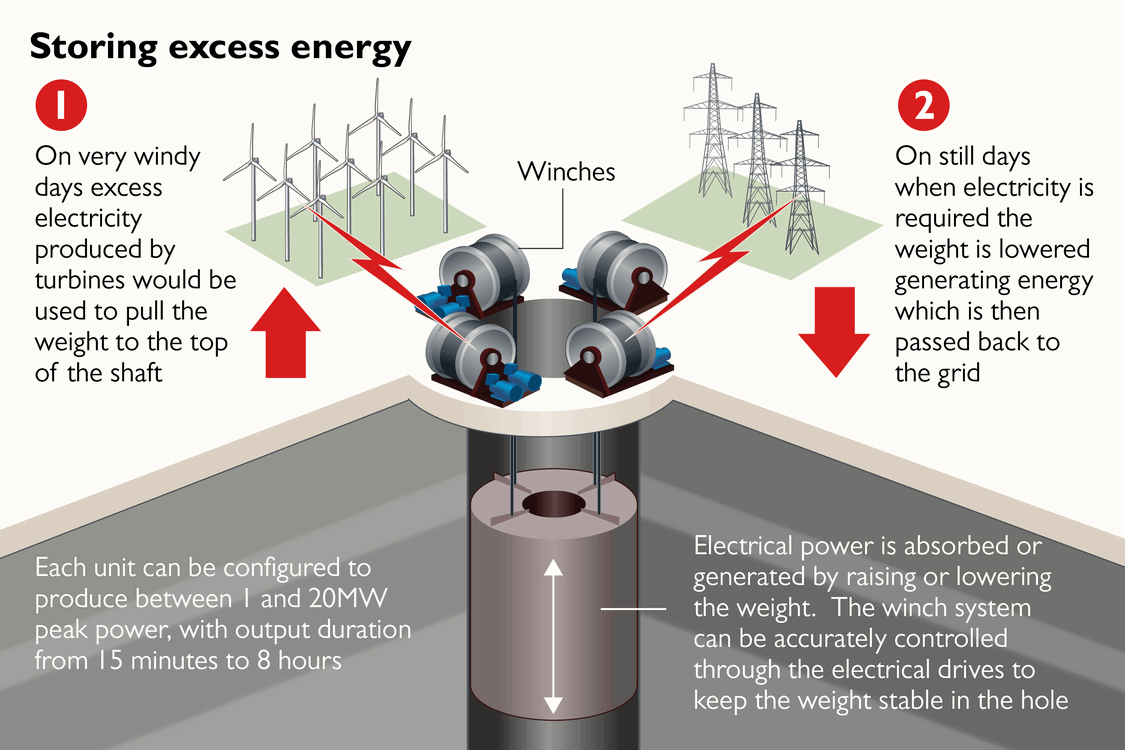
- There are a number of different gravity-based energy storage technologies, but they all work on the same basic principle.
- Example 1: Pumped hydro storage uses excess electricity to pump water uphill, then releases it downhill to generate electricity when needed.
- Example 2: Compressed air energy storage compresses air when there is excess electricity and then expands it to generate electricity when needed.
|
Benefits of Gravity-based Energy Storage
- High efficiency: These highly efficient storage systems recover most energy when discharged.
- Scalability: These storage systems can store large amounts of energy, making them ideal for intermittent renewable energy.
- Reliability: They are very reliable, with few moving parts and no emissions.
Challenges of Gravity-based Energy Storage
- Cost: These systems can be expensive to build because they require a lot of land and infrastructure.
- Land use: These systems require a lot of land, which can be challenging in areas where land is scarce.
- Response time: These systems can be slow to respond to changes in demand.
Intermittency Situation in India
- In India, grid managers face the challenge of sustaining a monthly addition of about 1,000 megawatts (1 GW) from renewables to the grid.
- Policy makers believe India needs to quickly develop energy storage options, as it is the world’s third largest producer of renewable energy, with ~40% of its electricity coming from non-fossil fuels.
- India’s green initiatives led to a 24% reduction in GDP emission intensity from 2005 to 2016, but they also posed challenges for a grid powered mainly by renewables.
- GoI is exploring two options: hydrogen and hybrid generation models blended with off-stream pumped storage.
- The Cabinet approved a policy for increasing green hydrogen production and its use as a fuel.
- The Power Ministry surveyed pumped hydro sites, and hydro PSUs are given targets for such schemes.
- They are considering opencast mines for potential pumped hydro sites.
{GS3 – S&T – BioTech} Nobel Prize in Medicine 2023
- Context (TH | IE): The 2023 Nobel Prize in Physiology or Medicine has been awarded to Hungarian biochemist Katalin Karikó and American physician-scientist Drew Weissman.
- Their work enabled the development of mRNA vaccines against COVID-19.

What are mRNA Vaccines, and Why were They crucial During COVID-19?
- Vaccines are designed to stimulate the immune system against specific infectious diseases.
- Traditionally, vaccines used weakened or inactivated viruses to stimulate antibody production.
- As technology advanced, vaccines began using partial viral genetic code instead of the whole virus.
- But large-scale development of these vaccines requires cell culture (growing cells under controlled conditions), which is time-consuming.
- During the COVID-19, this time-consuming way of producing vaccines proved ineffective. This is where mRNA technology proved crucial.
- This technology existed since the 1980s but wasn’t perfected for large-scale vaccine production.
- Basically, mRNA vaccines use genetically engineered mRNA to instruct cells to make the protein needed to fight a particular virus.
|
|
What Kariko and Weissman did to Make the mRNA Technology Viable for Vaccines?
- The problem with mRNA vaccines was that the body’s immune system recognised the lab-engineered mRNA as foreign and launched an immune response against it.
- Kariko/Weissman found a way to modify the mRNA, which abolished the immune response generation by bodies against them, making mRNA tech viable for large-scale vaccine production.
- COVID-19 vaccines Moderna (US) and Pfizer (US) used this mRNA technology.
Nobel Prize
|

{Prelims – Envi – Species} Beavers
- Context (WION): After 400 years, baby beaver takes birth in London.
- Beavers are semiaquatic amphibious rodents of the Northern Hemisphere.
- They are the largest rodents in North America and Eurasia.
- They are the second largest rodents worldwide.
- Distribution: They are native to North America, Europe, and Asia.
- Habitat: Streams, rivers, marshes, and ponds and on the shorelines of large lakes.
- Conservation Status:
- American Beaver (Castor canadensis): IUCN: Least Concern
- Eurasian Beaver (Castor fiber): IUCN: Least Concern
Significance of Beavers
- Beavers build dams and lodges using tree branches, vegetation, rocks and mud.
- Dams restrict water flow, and lodges serve as shelters.
- Their infrastructure creates wetlands used by many other species, and because of their effect on other organisms in the ecosystem, beavers are considered keystone species.
- Ecologists often refer to beavers as “ecosystem engineers” because of their ability to alter the landscapes in which they live.
|
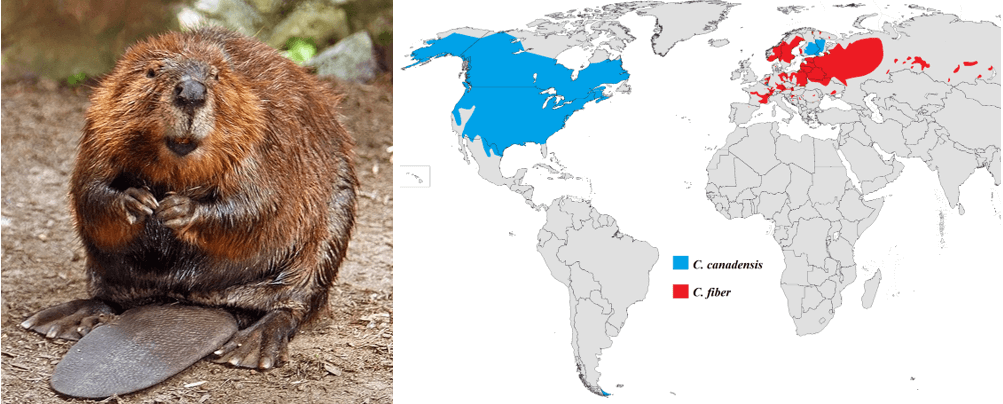
{Prelims – IR – India-Singapore} Military Exercises
- Context (TH): The navies of India and Singapore began their annual maritime military exercise SIMBEX in the South China Sea. It is the 30th edition of SIMBEX.
SIMBEX
- Singapore India Maritime Bilateral Exercise (SIMBEX) is an annual bilateral naval exercise conducted by the Indian Navy and the Republic of Singapore Navy (RSN).
- It began in 1994 and was initially known as Exercise Lion King.
- It is India’s longest uninterrupted naval exercise with any other country.
Exercise Bold Kurukshetra
- It is a joint exercise between the Singapore Army and the Indian Army.
- It was first conducted in 2005.
- The 13th edition of Exercise Bold Kurukshetra was held at Jodhpur Military Station, India in 2013.
Exercise Agni Warrior
- It is a bilateral exercise between the Singapore Army and the Indian Army.
- The 12th Edition of Exercise Agni Warrior was held in India in November 2022.
Joint Military Training (JMT)
- It is an annual exercise between the Republic of Singapore Air Force (RSAF) and the Indian Air Force (IAF). It was started in 2008.
- The 11th edition of the JMT was held at the Kalaikunda Air Force Station in India in Nov-Dec 2022.
{Prelims – Misc} Project Udbhav
- Context (TH | PIB): Project Udbhav is an initiative by the Indian Army to rediscover the Indic heritage of statecraft and strategic thoughts.
- It was started in 2021 by the Indian Army in collaboration with the United Service Institution of India (USI). It aims to bridge the gap between historical wisdom and contemporary strategic thinking.
Significance
- Empowerment of Indian officers with age-old strategic insights.
- Strengthening India’s self-reliance (Atmanirbhar Bharat) in defence and security.
- Preservation and application of ancient Indian wisdom in modern military scenarios.
- A deeper understanding of international relations and foreign cultures.
United Service Institution of India (USI)
|
{Prelims – Sci – Bio} Bombay Blood Group
- Context (HT): The Bombay blood group is extremely rare.
Blood Groups
- Blood groups are classified based on the presence or absence of specific antigens (chemicals that can induce immune response) on the surface of RBCs.
- Similarly, the plasma of different individuals contains two natural antibodies (proteins produced in response to antigens).
- The four most common blood groups are A, B, AB and O.
- AB-positive blood type is the universal recipient because AB-positive patients can receive red blood cells from all blood types.
- Blood donors with type O negative red blood cells are referred to as universal donors, and their red blood cells can be given to any other blood type.
|
| Blood Group | Antigens | Antibodies | Can give blood (RBC) to | Can receive blood (RBC) from |
| AB | A and B | None | AB | AB, A, B, O |
| A | A | B | A and AB | A and O |
| B | B | A | B and AB | B and O |
| O | None | A and B | AB, A, B, O | O |
Antigen H
- H antigen is a sugar molecule found on the surface of RBCs and in other bodily secretions.
- It is the precursor to the A and B antigens, the two main antigens determining blood type.
- Depending upon a person’s ABO blood type, the H antigen is converted into either the A antigen, B antigen, or both. If a person has blood group O, the H antigen remains unmodified.
Bombay Blood Group (BBG)
- BBG was first discovered in Mumbai (then Bombay) in 1952.
- Also known as hh, BBG is deficient in expressing H antigen, meaning the RBC has no H antigen.
- The hh blood group is frequently mistaken for the O group, but the key distinction is that the O group possesses the H antigen, whereas the hh group does not.
- Lack of H antigen does not indicate a weak immune system or increased disease susceptibility.
- Their counts for haemoglobin, platelets, WBCs and RBCs are similar to those of other blood types.
- Globally, the hh blood type is rare (1 in 4 million), with a higher occurrence in South Asia.
Concern with BBG: Transfusion Limitations
- The individuals with BBG can only be transfused autologous blood (same blood group).
- Rejection may occur if they receive blood from A, B, AB or O blood group.
- In contrast, the hh blood group can donate blood to ABO blood types.
- This group is rarely stored in blood banks due to its rarity (blood has a shelf life of 35-42 days).
- So, a donor is required very urgently when there is a demand for a BBG patient.
For a detailed study on Blood > Blood | Blood Groups | Formed Elements – PMF IAS





![PMF IAS Environment for UPSC 2022-23 [paperback] PMF IAS [Nov 30, 2021]…](https://pmfias.b-cdn.net/wp-content/uploads/2024/04/pmfiasenvironmentforupsc2022-23paperbackpmfiasnov302021.jpg)
